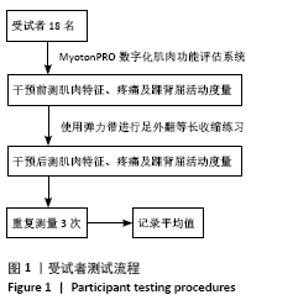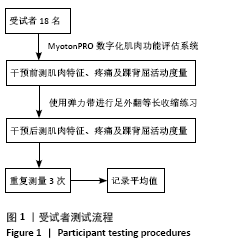[1] AKGONUL B, ATANSAY V, KARA AN, et al. 256 Relationship between balance and lower extremity ROM, H/Q ratio, hamstring tightness, beighton score in professional folk dancers and professional football players. Br J Sports Med. 2020;54(Suppl 1):A106.
[2] 周林,章岚.足球运动员腘绳肌损伤研究进展[J].中国运动医学杂志,2018,37(12):1038-1044.
[3] SAHRMANN S, AZEVEDO DC, DILLEN LV.Diagnosis and treatment of movement system impairment syndromes. Braz J Phys Ther. 2017;21(6): 391-399.
[4] 迈尔斯, 关玲, 周维金,等. 解剖列车:徒手与动作治疗的肌筋膜经线[M]. 北京:军事医学科学出版社,2015.
[5] GALASSO A, URITS I, AN D, et al. A Comprehensive Review of the Treatment and Management of Myofascial Pain Syndrome. Curr Pain Headache Rep. 2020;24(8):43.
[6] ARROYO-FERNANDEZ R, BRAVO-ESTEBAN E, DOMENECH-GARCIA V, et al. Pressure-Induced Referred Pain as a Biomarker of Pain Sensitivity in Fibromyalgia. Pain Physician. 2020;23(4):E353-E362.
[7] HUANG QM, YE G, ZHAO ZY, et al. Myoelectrical activity and muscle morphology in a rat model of myofascial trigger points induced by blunt trauma to the vastus medialis. Acupunct Med. 2013;31(1):65-73.
[8] HUANG QM, LIU L. Wet needling of myofascial trigger points in abdominal muscles for treatment of primary dysmenorrhoea. Acupunct Med. 2014;32(4):346-349.
[9] KOTZAMANIDIS C. Are the antagonist muscles fatigued during a fatigue task of agonist muscles?. Isokinetics and Exercise Science. 2004;12(3): 167-171.
[10] 诸毅晖. 康复评定学[M]. 上海:上海科学技术出版社,2008.
[11] ELOQAYLI H. Subcutaneous accessory pain system (SAPS): A novel pain pathway for myofascial trigger points. Med Hypotheses. 2018;111:55-57.
[12] 李航, 张日初, 周志见,等. 用Myoton技术评价肌肉特性在体育学中的应用[J]. 四川体育科学,2019,38(5):33-39.
[13] 张海峰,黄力平.康复评定学[M].北京:高等教育出版社,2018.
[14] WANG JS. Therapeutic effects of massage and electrotherapy on muscle tone, stiffness and muscle contraction following gastrocnemius muscle fatigue. J Phys Ther Sci. 2017;29(1):144-147.
[15] BENSAMOUN SF, GLASER KJ, RINGLEB SI, et al. Rapid magnetic resonance elastography of muscle using one dimensional projection.J Magn Reson Imaging. 2008;27(5):1083-1088.
[16] KUBO K, MORIMOTO M, KOMURO T, et al. Effects of plyometric and weight training on muscle-tendon complex and jump performance.Med Sci Sports Exerc. 2007;39(10):1801-1810.
[17] AGYAPONG-BADU S, WARNER M, SAMUEL D, et al. Measurement of ageing effects on muscle tone and mechanical properties of rectus femoris and biceps brachii in healthy males and females using a novel hand-held myometric device. Arch Gerontol Geriatr. 2016;62:59-67.
[18] DOWLING B, MCPHERSON AL, PACI JM, et al. Weightbearing ankle dorsiflexion range of motion and sagittal plane kinematics during single leg drop jump landing in healthy male athletes.J Sports Med Phys Fitness. 2018;58(6):867-874.
[19] GOSSMAN MR, SAHRMANN SA, ROSE SJ. Review of length-associated changes in muscle. Experimental evidence and clinical implications.Physical Therapy. 1982;62(12):1799.
[20] 王瑞元,苏全生.全国体育院校教材委员会审定.运动生理学[M].北京:人民体育出版社,2012.
[21] Wang JS.Therapeutic effects of massage and electrotherapy on muscle tone, stiffness and muscle contraction following gastrocnemius muscle fatigue. J Phys Ther Sci. 2017;29(1):144-147.
[22] Murayama M, Watanabe K, Kato R,et al. Association of muscle hardness with muscle tension dynamics: a physiological property. Eur J Appl Physiol. 2012;112(1):105-112.
[23] Edgerton VR, Wolf SL, Levendowski DJ, et al. Theoretical basis for patterning EMG amplitudes to assess muscle dysfunction.Med Sci Sports Exerc. 1996;28(6):744-751.
[24] Watsford ML, Murphy AJ, Mclachlan KA, et al. A prospective study of the relationship between lower body stiffness and hamstring injury in professional Australian rules footballers.Am J Sports Med. 2010;38(10):2058-2064.
[25] O’Carroll GC, King SL, Carroll S, et al.The effects of exercise to promote quality of life in individuals with traumatic brain injuries: a systematic review. Brain Inj. 2020;34(13-14):1701-1713.
[26] ZINDER SM, PADUA DA. Reliability, validity, and precision of a handheld myometer for assessing in vivo muscle stiffness. J Sport Rehabil. 2011; 20(3):2010_0051.
[27] WAGNER H, BLICKHAN R.Stabilizing Function of Skeletal Muscles: an Analytical Investigation. J Theor Biol. 1999;199(2):163-179.
[28] LAZARO R. Within-session effects of selected physical rehabilitation interventions for a dysfunctional arm post-stroke on arm movement and muscle firing patterns. Ann Phys Rehabil Med. 2018;61.
[29] PEARSON SJ, MCMAHON J. Lower limb mechanical properties: determining factors and implications for performance. Sports Medicine. 2012; 42(11):929.
[30] MIYAMOTO N, HIRATA K. Moderate Associations of Muscle Elasticity of the Hamstring with Hip Joint Flexibility. Int J Sports Med. 2019;40(11): 717-724.
[31] Hill AV. The Heat of Shortening and the Dynamic Constants of Muscle. Proce R Soc Lond B. 1938;126:136-195.
[32] KALIA V, LEUNG D, SNEAG D, et al. Advanced MRI Techniques for Muscle Imaging. Semin Musculoskelet Radiol. 2017;21(4):459-469.
[33] KOBAYASHI E, MATSUMOTO H, HAYASHI I, et al. Age-related changes in muscle elasticity around the shoulder joint in young male baseball players: A prospective longitudinal study. J Orthop Sci. 2020;25(4):582-587.
[34] FERNÁNDEZ-DE-LAS-PEÑAS C, ALONSO-BLANCO C, CUADRADO ML, et al. Myofascial trigger points and their relationship to headache clinical parameters in chronic tension-type headache. Headache. 2006; 46(8):1264-1272.
[35] RICKARDS LD. The effectiveness of non-invasive treatments for active myofascial trigger point pain: A systematic review of the literature. Int J Osteopath Med. 2006;9(4):120-136.
[36] GHASEMI SH, KALANTARI H, ABDOLLAHIKHO SS, et al. Fatigue reliability analysis for medial tibial stress syndrome. Mater Sci Eng C Mater Biol Appl. 2019;99:387-393.
[37] SCHALLIG W, VAN DEN NOORT JC, MCCAHILL J, et al. Comparing the kinematic output of the Oxford and Rizzoli Foot Models during normal gait and voluntary pathological gait in healthy adults. Gait Posture. 2020;82:126-132.
[38] DELEU PA, BESSE JL, NAAIM A, et al. Change in gait biomechanics after total ankle replacement and ankle arthrodesis: a systematic review and meta-analysis.Clin Biomech (Bristol, Avon). 2020;73:213-225.
[39] TOMRUK M, TOMRUK MS, ALKAN E, et al. Immediate Effects of Ankle Joint Mobilization With Movement on Postural Control, Range of Motion, and Muscle Strength in Healthy Individuals: A Randomized, Sham-Controlled Trial. J Sport Rehabil. 2020;29(8):1060-1068.
[40] DOWLING B, MCPHERSON AL, PACI JM. Weightbearing ankle dorsiflexion range of motion and sagittal plane kinematics during single leg drop jump landing in healthy male athletes. J Sports Med Phys Fitness. 2018;58(6):867-874.
[41] MALLIARAS P, COOK JL, KENT P. Reduced ankle dorsiflexion range may increase the risk of patellar tendon injury among volleyball players. J Sci Med Sport. 2006;9(4):304-309.
[42] MENÉNDEZ C, BATALLA L, PRIETO A, et al. Medial Tibial Stress Syndrome in Novice and Recreational Runners: A Systematic Review. Int J Environ Res Public Health. 2020;17(20):7457.
|





